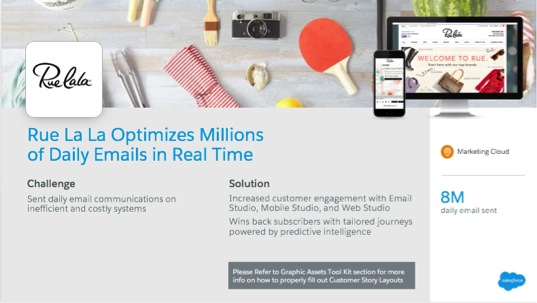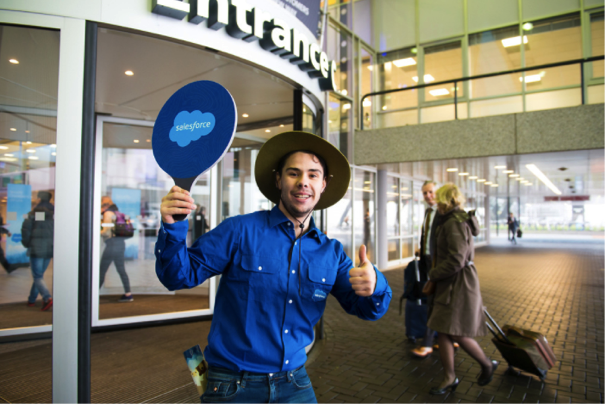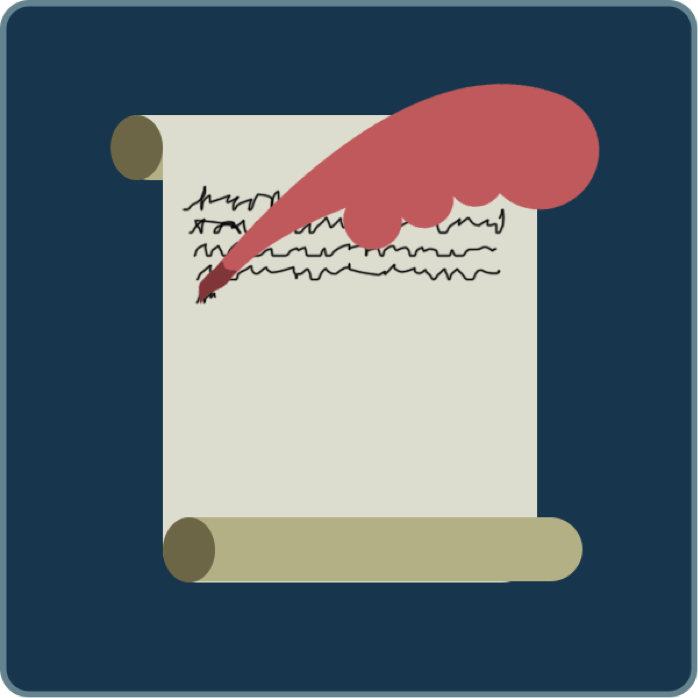Build Your Network
Learning Objectives
After completing this unit, you’ll be able to:
- Define the essential ingredients for an effective sales kit.
- List strategies for identifying appropriate Salesforce AEs.
- Explain how to use email to connect with a sales team.
Before You Go
Now that you’ve internalized the Salesforce brand and learned about sales teams, let’s get you talking to people. Before you go gallivanting around Salesforce, though, take a little time to:
- Package your product and your message into a sales kit that shows a sales team how you can deliver deals and help close them.
- Figure out where you can meet the sales teams you’re after so you can step up and introduce yourself.
Let’s see how to assemble a sales kit that can connect you with a Salesforce sales team.
Some Assembly Required
You’ve created your value proposition, and you’ve narrowed your search to a few Salesforce sales teams. You want to tell your future collaborators that you can bring in business and work with them to close deals. You want them to know you can execute. But you can’t just email a sales team and tell them all this—they have to see it for themselves.
The best way to impress a Salesforce sales team is to send them a specific message with supporting materials tailored just for them.
This might sound hard: Creating custom content for an entirely new audience is a lot of work. But don’t worry—use our Salesforce Partner Sales Kits Template to build your own.
What goes in a sales kit?
- A partnership FAQ that addresses any questions the team might have
- At least three customer stories in a slide deck
- A one-page partnership “cheat sheet” to introduce yourself to Salesforce sales reps internally
- A partnership playbook: A brief slide deck for your first meeting
- A short interactive or recorded demo
It’s a lot of stuff! But you’re asking a Salesforce sales team to take time out of their day to meet you. This is how you show them you’re serious. Besides, the work that you do up front saves you lots of time later on.
Let’s look at all these pieces.
Define Your Messaging with Frequently Asked Questions
The best way to start a conversation is to ask some questions. And if you give your audience questions to ask, you’re likely to know the answers! Log in to the Salesforce Partner Community, hop over to the Salesforce Partner Program Overview, and review the FAQ at the end of the page. The questions cover your product, customers, marketing, onboarding, and so on. Here are some of the easy ones:
- Give us your 10-second pitch.
- What primary customer pain point does your solution address?
- What Salesforce product(s) do you integrate with?
It’s OK if you don’t know all the answers yet, but the FAQ shows you what the sales team expects.
Your FAQ defines the messaging you use to build out the rest of your sales kit. Use it to get your sales team on board. The FAQ is also a platform for your go-to-market strategy and an opportunity to gain your team’s consensus on your approach.
When you’re happy with it, share your FAQ with your partner account manager (PAM), who can use it to spread the word to sales and product leadership.
Create a Customer-Story Slide Deck

Salesforce uses these templates both internally, to show use cases to sales teams, and externally, to demonstrate success to customers. Plug your content into the Salesforce templates to connect with your audience in a familiar format.
Customer story slides are a quick and easy way to beef up your sales kit. Get a good spread of slides by finding stories for different market segments and use cases.
Make Your Cheat Sheet
For each of your solutions, fill out the one-page partnership cheat sheet, also available on the Salesforce Partner Community. If you’ve already filled out your FAQ, this one’s a breeze. It has information on your target market, up-sell opportunities, and customer base. It’s a resource you can use to introduce yourself to sales reps and co-selling partners.
Build a Partnership Playbook
The Partnership Playbook is your knowledge base. Share it as a complete resource, or mine it for slides when you create a presentation.
The Partner Success Group designed this playbook from scratch. Every slide focuses on an important area of the partnership. What’s the one-sentence description of your product? What strengths do you bring to a typical sales opportunity? How does your solution integrate with the Salesforce Platform? It’s all there.
Of course the big question is: What’s in it for Salesforce? Reserve a slide for that. Focus on how quickly you close deals, how you drive license sales, and how you minimize risk.
Create a Demo

Take a page from the Partner Sales Engineer Playbook to see how the pros prepare for and execute their demos. Consider your audience. Is your demo short and sweet for AEs, or detailed and elaborate for engineers?
Put the Lid on Your Kit
When you’ve assembled everything, show your company’s account executives how to use it. Share it as much as you can with Salesforce sales teams. If you have a Salesforce-facing Slack channel, make it available there.
Ask for feedback and use it to refine your kit. The SaaS industry moves quickly, so keeping things fresh helps you stay ahead.
Build Your Network IRL (In Real Life)
Making connections with a Salesforce sales team doesn’t have to be hard. It can seem daunting if you’ve been introducing yourself to strangers online only, but in person it’s actually much easier to take temperatures and make an impression.
When you narrow down your prospective customer base, you get a better idea of which sales teams you want to target and where to find them. Widen your net by cosponsoring events with consulting partners or well-tenured AppExchange partners with similar target customers. Get all the right people in a room, and great things can happen.
Yes, yes, networking in person is good. This is not a new idea! But what does it look like in practice?

- Dreamforce and World Tours—These are great Salesforce-specific events where you can interact with company leadership and countless customers. Plan ahead for sponsorship opportunities by checking out the Events page on the Salesforce Partner Community.
- Industry conferences—Salesforce provides limited funds for industry events, so double up with Salesforce AEs and sales engineers to do joint demos and co-host customer meetings.
- Happy hours—These are classic networking activities. They aren’t great learning opportunities, but they do get your name out. If you host one, follow up with the attendees and add them to your Slack channel.
Don't Forget About Email

Never underestimate the power of good, old-fashioned email. Everyone who has customers still uses email, because some customers don’t use anything else. So it’s a fine way to introduce yourself to a Salesforce team.
But before firing it off, ask yourself: Am I contacting this person with an actionable request? If not, wait till you can offer something. Salesforce sales teams work with dozens of partners weekly. They draw up their schedules based on the business that partners bring in. If you want a good start, bring along an active opportunity, or at least a compelling customer pipeline.
Grab your reader's attention with a lean writing style: direct, informative, and concise. Introduce yourself, present your customers and their needs, and end with a call to action. Here’s an example:
Hi Claire,
My name is Joe Smith. I’m an AE with AppABC, covering mid-market customers in the Bay Area. I’m working with John Watson (CTO) of 123Co, an artisan abacus manufacturer, who recently installed our app into the company’s Sandbox with the goal of moving to production in the next few weeks.
I’d like to connect with you to discuss 123Co’s account plan and how we can drive higher Slack adoption and additional licenses.
Our application drove US$1 million in ACV last year for five different AEs. Let’s get a win in your patch as well!
Hope to talk soon,
Joe
Joe Smith—Mobile: 415-555-1234
Attach something from your sales kit to make your message punchier. A concrete example of your work goes a long way toward helping an AE understand you and your value. If you’ve got a ton of accolades on AppExchange, include a link to your listing.
Go Make Some Friends
Now you know what you have to do to connect yourself to a sales team. It’s a large landscape, but it’s manageable if you make the effort to meet people. And with a sales kit in hand, you can easily show them what you’re worth.
When you’re paired with the right sales team, no one can stop you. Next, we discuss how to handle the first opportunities that you score together.